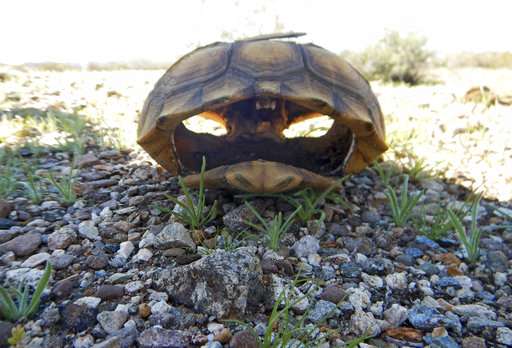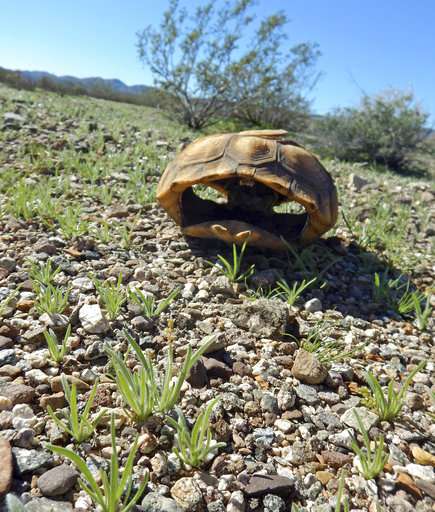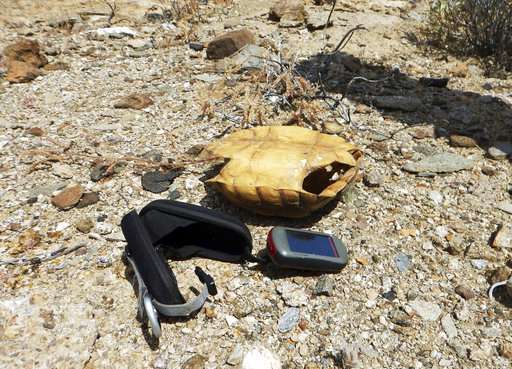This Feb. 16, 2017 photo provided by the U.S. Geological Survey shows the remains of a desert tortoise near Joshua Tree National Park in California's southern desert. Scientists examining the deaths of female desert tortoises near the park say it appears the animals died while exhausting their water and energy to lay eggs during California's drought. (Shellie Puffer/U.S. Geological Survey via AP)
Scientists examining the deaths of female desert tortoises in Southern California said it appears the animals died while exhausting their water and energy to lay eggs during California's historic drought.
Researchers want to know why female tortoises are dying in greater numbers than males in the Joshua Tree National Park.
U.S. Geological Survey biologist Jeffrey Lovich said he believes the tortoises died during a desperate attempt to fight extinction. He called it an "evolutionary gamble"—choosing to try and reproduce despite harsh conditions.
"Females will go out of their way to produce a clutch of four or so eggs," Lovich told The Associated Press on Tuesday. "They'll do it during a drought, when they can't find the water they need, to have a chance to win at the game of life."
A team led by Lovich was surveying a study area of several square miles when it discovered the remains of 14 female and three male tortoises—and 15 live animals, most of them males.
Judging from the deterioration of the carcasses and chalkiness of the bones, Lovich concluded the animals died over the last five to 10 years, a span including five consecutive years of severe drought.
One of California's wettest winters in years prompted officials to declare an end to the historic cry spell in nearly all of the nation's most populous state. But Lovich said the risk to tortoises could remain throughout desert areas as temperatures rise and forage diminishes because of global climate change.
This Feb. 2, 2017 photo provided by the U.S. Geological Survey shows the remains of a desert tortoise near Joshua Tree National Park in California's southern desert. Scientists examining the deaths of female desert tortoises near the park say it appears the animals died while exhausting their water and energy to lay eggs during California's drought. (Shellie Puffer/U.S. Geological Survey via AP)
Over the past three decades, Joshua Tree's tortoise population has plummeted from about 30,000 to an all-time low of roughly 3,000.
Desert tortoises are a threatened species that typically have 50-year lifespans in the wild, with some living 80 years.
This May 10, 2017 photo provided by the U.S. Geological Survey shows the upside-down remains of a desert tortoise, alongside a GPS device used to track the animal, near Joshua Tree National Park in California's southern desert. Scientists examining the deaths of female desert tortoises near the park say it appears the animals died while exhausting their water and energy to lay eggs during California's drought. (Shellie Puffer/U.S. Geological Survey via AP)
© 2017 The Associated Press. All rights reserved.

























